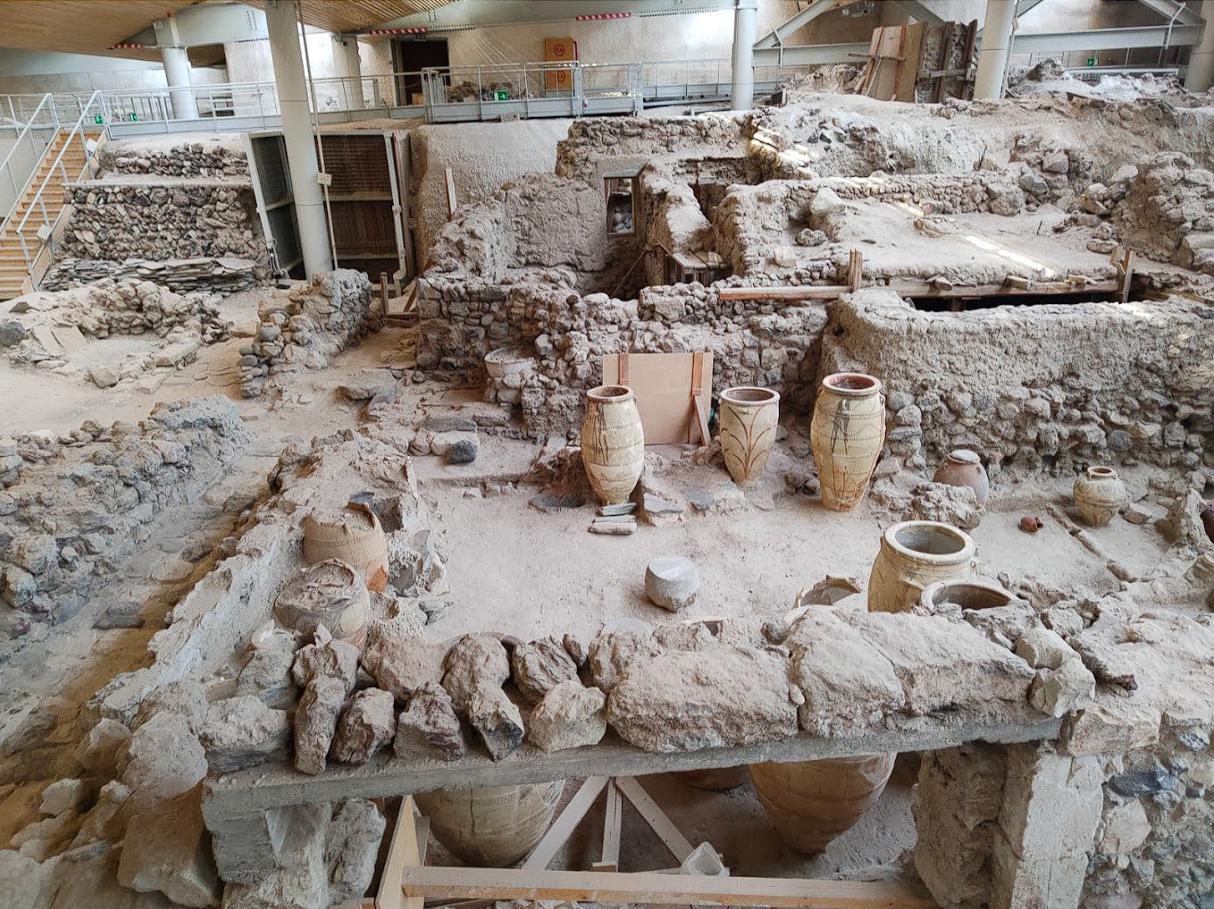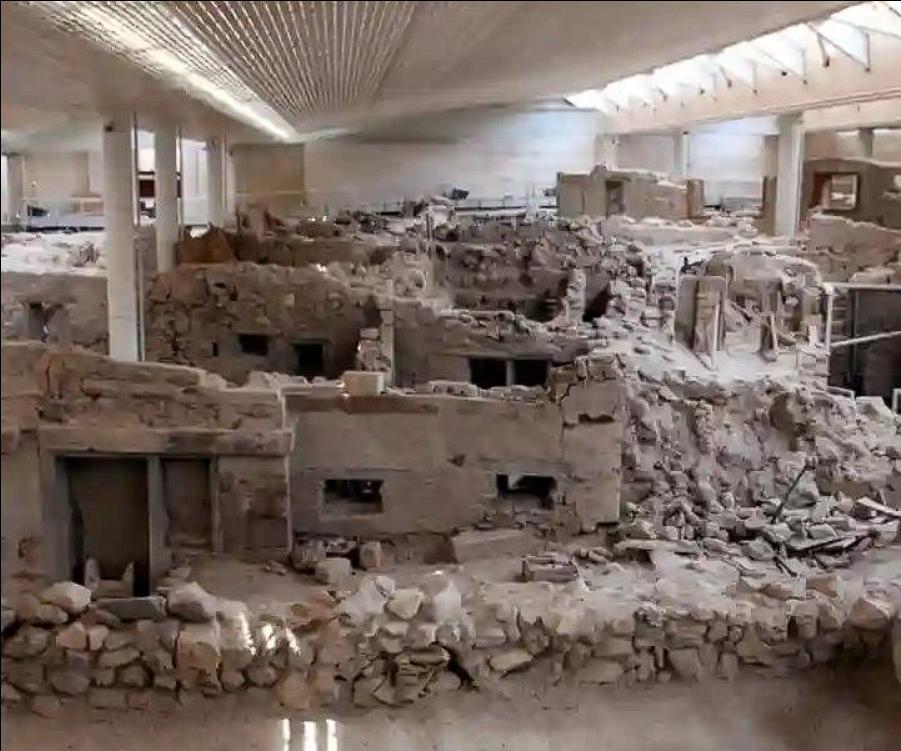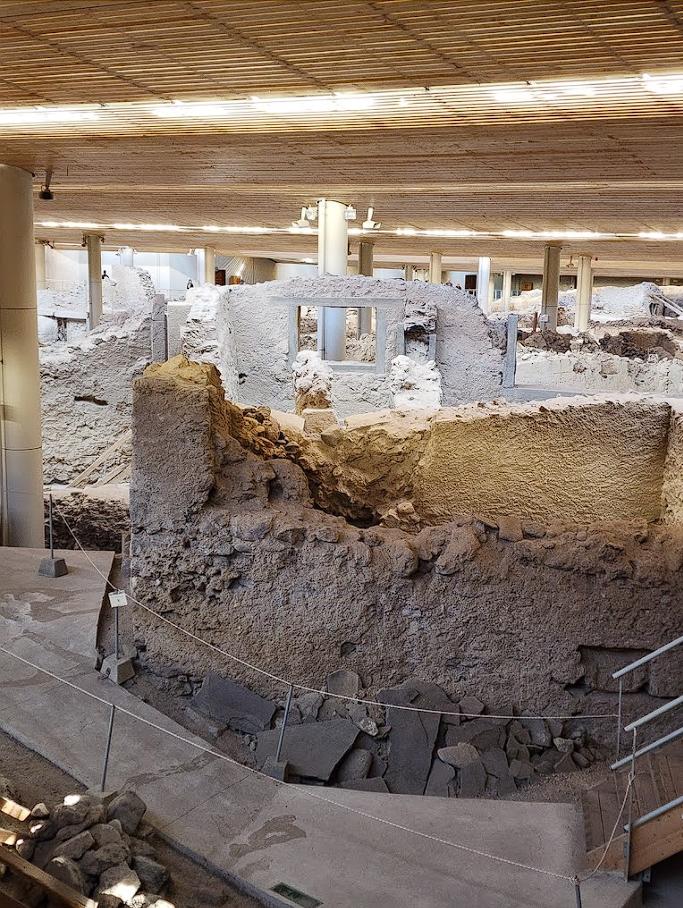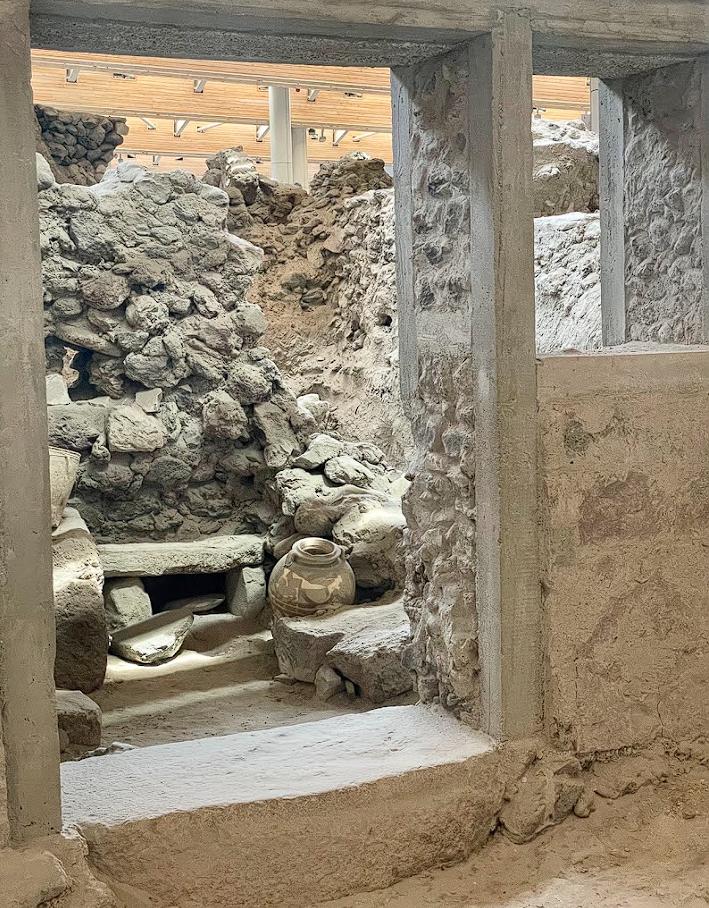Beneath the volcanic ash of Santorini lies Akrotiri, a hauntingly preserved Bronze Age city, often dubbed the “Bronze Age Pompeii.” Unlike its Roman counterpart, Akrotiri’s destruction occurred around 1600 BCE, preserving a Minoan civilization in a moment of catastrophic stillness. This archaeological treasure offers an intimate glimpse into a vibrant past and sparks enduring questions about ancient mysteries.

The Catastrophic Eruption: A Moment Frozen in Time
- The Thera Eruption: A Bronze Age Apocalypse:
- Around 1600 BCE, the massive eruption of the Thera volcano obliterated Akrotiri, transforming the Aegean landscape and burying the city in volcanic ash.
- This catastrophic event, though destructive, also preserved the city, creating a time capsule of Bronze Age life.
- This eruption, was one of the largest in human history.
- A City Preserved: Akrotiri’s Archaeological Treasure:
- What the eruption destroyed, it also preserved, freezing an entire civilization in silence for over three thousand years.
- The layers of volcanic ash acted as a protective shroud, safeguarding the city’s structures and artifacts.
- This preservation, is what makes Akrotiri, such an important archeological site.
- Early Excavations and Rediscovery: Unearthing the Past:
- Though minor excavations began in the late 1800s, the true scope of Akrotiri came to light in the 1960s.
- Archaeologists uncovered a remarkably advanced urban center, revealing the sophistication of the Minoan civilization.
- The 1960’s excavation, was a turning point, in understanding the site.
A Glimpse into Minoan Life: Art, Architecture, and Mystery

- Advanced Urban Center: Multi-Story Buildings and Infrastructure:
- Akrotiri revealed a vibrant urban center with multi-story buildings, elegant furniture, and complex plumbing systems.
- These architectural and infrastructural features highlight the advanced nature of the Minoan civilization.
- This discovery, shows that the Minoan people were very advanced.
- Vivid Frescoes: Capturing Daily Beauty:
- The walls of Akrotiri were adorned with vivid frescoes depicting scenes of dolphins, ritual life, and saffron gatherers.
- These frescoes offer a rare glimpse into the daily life and artistic expression of the Minoan people.
- The frescoes, are a beautiful example, of Minoan art.
- The Absence of Human Remains: A Silent Escape:
- Strangely, no human remains were found at Akrotiri, suggesting that the inhabitants may have escaped before the final eruption.
- This absence adds a layer of mystery to the site, raising questions about the evacuation and the final moments of the city.
- This mystery, is one of the most interesting aspects of the site.
The Echoes of Atlantis: Myth and Reality
- A World Frozen Mid-Breath: Intimate Preservation:
- Akrotiri’s power lies in its stillness, with loaves of bread in ovens and jugs undisturbed on shelves, offering a hauntingly intimate glimpse into a world frozen mid-breath.
- This preservation creates a sense of immediacy, connecting us to the lives of the ancient inhabitants.
- This feeling, of stepping back in time, is what makes Akrotiri, so special.
- Plato’s Atlantis: An Enduring Question:
- The destruction of Akrotiri raises the question of whether it could have been the inspiration behind Plato’s Atlantis, a thriving island civilization swallowed by the sea.
- This connection to the Atlantis myth adds a layer of intrigue and speculation to the archaeological site.
- This connection, is a topic of much debate.
- A Whisper from the Bronze Age: Awe and Wonder:
- Akrotiri is more than just an excavation; it is a whisper from the Bronze Age, preserved not only in ash but in awe.
- The site’s preservation and the mysteries it holds continue to captivate archaeologists and visitors alike.
- The wonder, that Akrotiri inspires, is something that will last for generations.
Akrotiri stands as a powerful testament to the fragility and resilience of ancient civilizations. Its preservation offers a unique window into the Minoan world, sparking both awe and enduring questions about the past.

CÁC TIN KHÁC
Mary Walton: The Forgotten Inventor Who Helped Clean Up America’s Cities
Tomb of Queen Nefertari in the Valley of the Queens, Egypt
Discover the Hypostyle Hall of the Temple of Hathor at Dendera
Venus de Losange: Unveiling the Mystery of a 20,000-Year-Old Paleolithic Icon